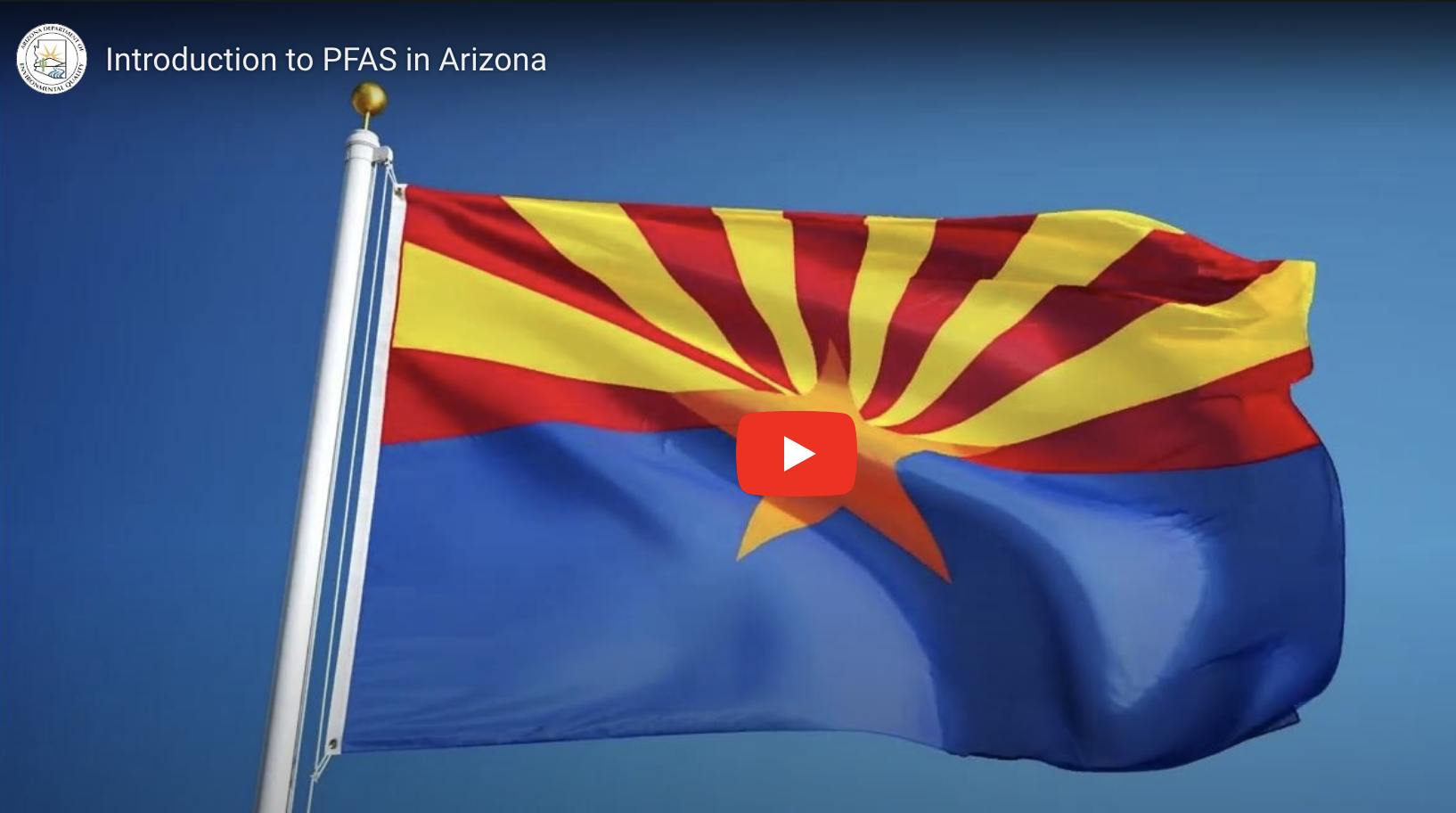OEE | PFAS Resources

PFAS Resources
ADEQ is monitoring scientific, regulatory and legal developments related to PFAS (per- and polyfluoroalkyl substances) and participating in related discussions with federal, state and local agency partners. PFAS exposure is linked to potential adverse human health outcomes and is the subject of increasing regulation and litigation. To keep the public and other stakeholders informed, ADEQ will update this PFAS Resources webpage with new information as it becomes available | View FAQs >
What are PFAS?
PFAS are a group of man-made chemicals with fire-retardant properties manufactured and used by various industries since the 1940s. PFAS have been used in many industrial processes as well as to make products such as stain and water-resistant carpets and clothing, food packaging, and firefighting foam | Learn More >
PFAS Regulations
PFAS regulations have increased at federal and state levels in the United States. New regulations have focused on decreasing their use in manufacturing, lowering the limits for acceptable levels of PFAS in groundwater and soil, and requiring remediation projects to address PFAS contamination.
On April 10, 2024, the United States Environmental Protection Agency (EPA) finalized a National Primary Drinking Water Regulation (NPDWR) establishing legally enforceable levels, called Maximum Contaminant Levels (MCLs), for six PFAS in drinking water: PFOA, PFOS, PFHxS, PFNA, and HFPO-DA as contaminants with individual MCLs, and PFAS mixtures containing at least two or more of PFHxS, PFNA, HFPO-DA, and PFBS using a Hazard Index MCL to account for the combined and co-occurring levels of these PFAS in drinking water. EPA NPDWR | Learn More >
On April 19, 2024, the EPA announced a final rule to designate two of the most widely used PFAS chemicals, PFOA and PFOS, as hazardous substances under the Comprehensive Environmental Response, Compensation, and Liability Act (CERCLA), also known as Superfund | Learn More >
This designation also allows these chemicals to be addressed under the Water Quality Assurance Revolving Fund program, known as WQARF | Learn More >
Additional EPA Resources:
ADEQ Actions
ADEQ has developed a carefully considered approach to address PFAS in Arizona while federal regulations are being established. The agency approach will be continually updated as significant developments occur | View Strategy >
As part of the approach, ADEQ has taken many proactive steps to understand the scope of PFAS impacts and ensure that Arizona is prepared to meet the new federal standards. Some of these steps include:
- Addressing PFAS in Drinking Water | Learn More >
- Protecting Tucson’s Drinking Water Supply | Learn More >
- Luke Air Force Base Area Activities | Learn More >
- PFAS in Firefighting Foam | Learn More >
- PFAS Rulemaking | Learn More >
PFAS in Drinking Water
If you are concerned about PFAS in drinking water, there are key actions you can take. For example, you can contact your drinking water utility to find out more about your drinking water, including what contaminants may be present. If the utility is monitoring for PFAS, the utility should be able to provide information about what levels have been detected and whether any actions are being taken. For utilities that have participated in ADEQ’s drinking water sampling program, a map of results is available | Learn More > | View Map >
If you remain concerned after talking to your utility, then you may consider using or installing in-home water treatment (e.g., a filter) that is certified to lower the levels of PFAS in your water and/or contact your health care provider as well as your state or local health department. You can find more information about water filters that help reduce PFAS from EPA or by consulting ADEQ’s Water Treatment Devices Guidance.
Additional Resources:
- EPA Home Filter Fact Sheet | View >
- Point-of-Use and Point-of-Entry Water Treatment Devices | View >
- Resources for Private Well Owners | Learn More >
Watch a Video
Agency for Toxic Substances & Disease Registry:
AZ Department of Health Services:
EPA:
NSF:

